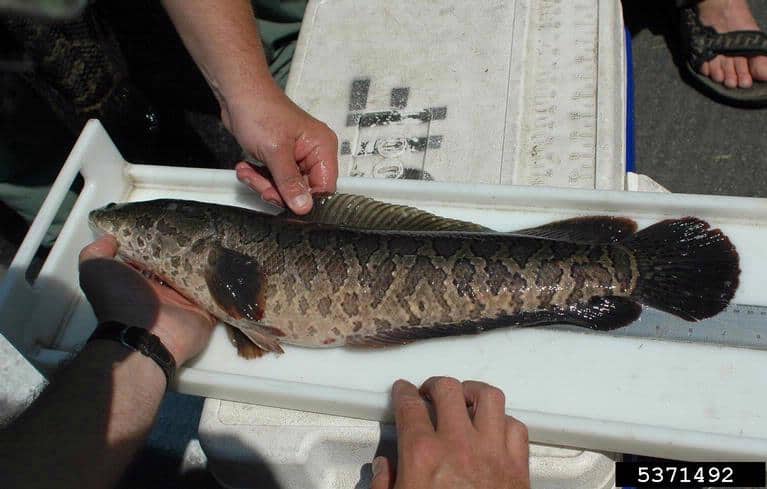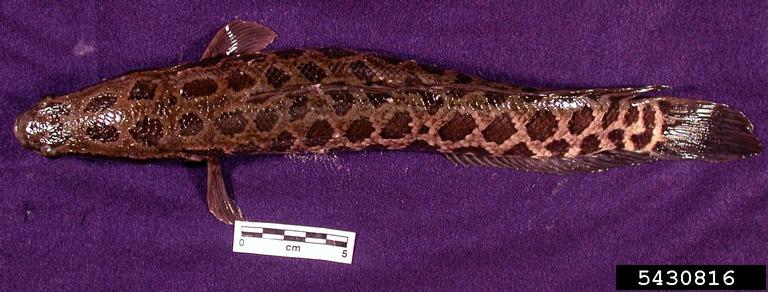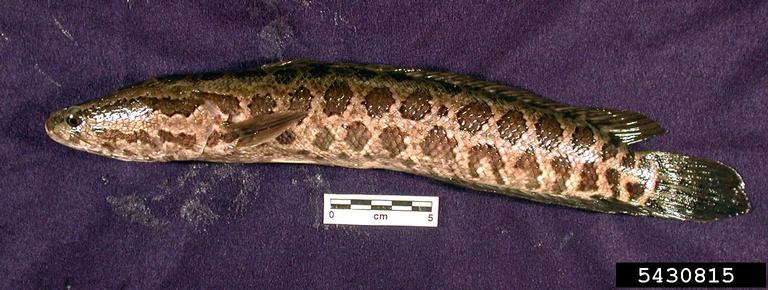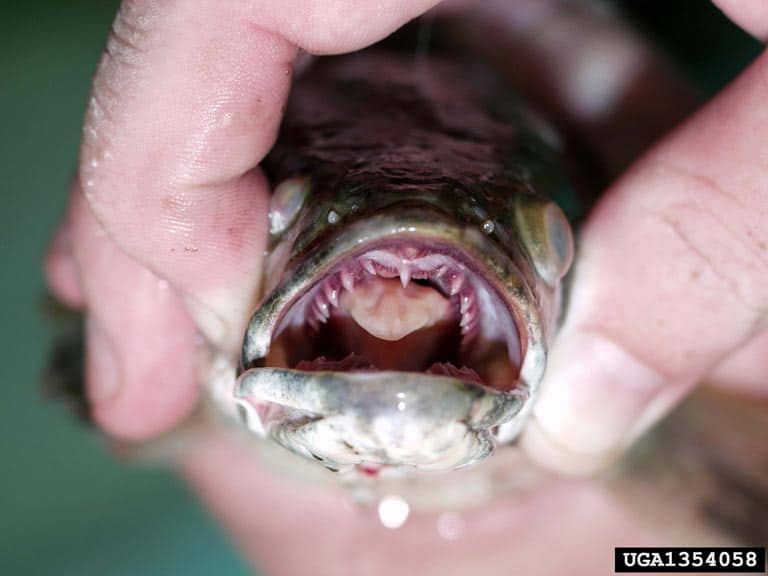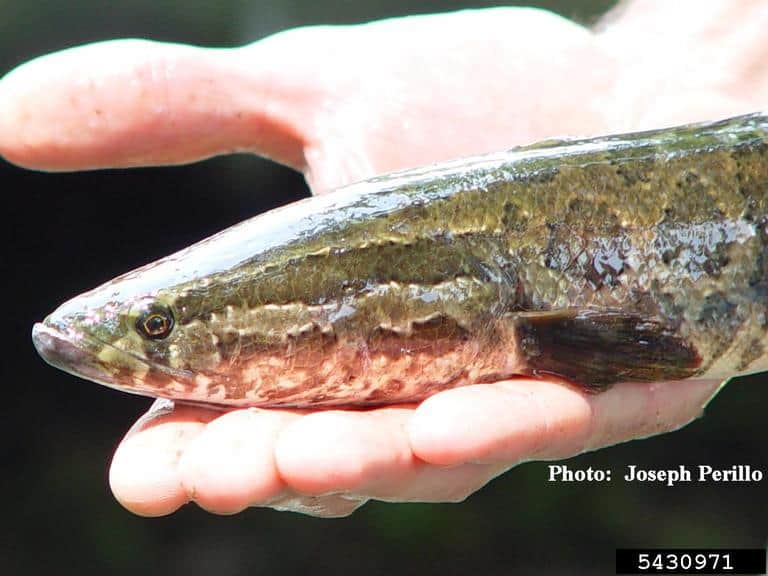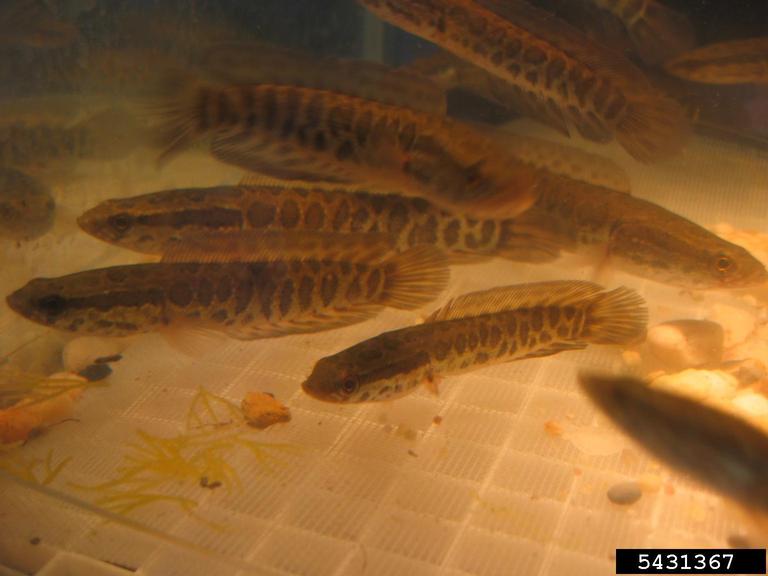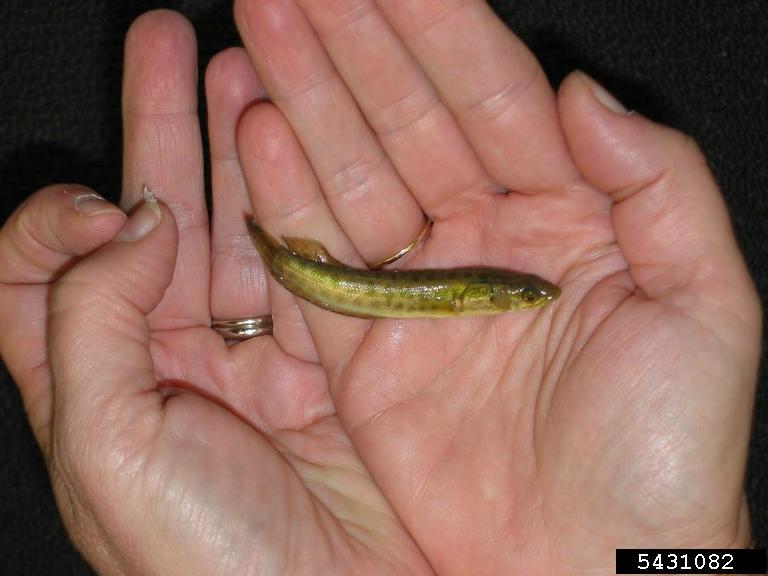*Prohibited in Michigan
Report this species to:
Lucas Nathan, DNR Fisheries Division, nathanl@michigan.gov, 517-599-9323.
If possible, please take one or more photos of the invasive species you are reporting. Also make note of the location, date and time of the observation. This will aid in verification of your report. You may be asked to provide your name and contact information if follow-up is needed.
– Or – use the Midwest Invasive Species Information Network (MISIN) online reporting tool.
– Or – download the MISIN smartphone app and report from your phone – MISIN.MSU.edu/tools/apps/#home.
Identification:
- Body length can reach up to 33 inches.
- Color is generally tan with dark brown mottling.
- Sharp teeth like a pike or pickerel.
- Extended anal fin.
- Pelvic fin is up near the gills and pectoral fins.
Habitat:
Snakehead fish live in a wide variety of habitats. This fish species has the ability to breathe out of water anywhere from 3 to 7 days. This allows for the potential ability to move from one body of water to another using its pectoral fins, but the process is slow and usually unsuccessful.
Diet:
These fish are voracious carnivores.
Native Range:
Eastern Asia.
U.S. Distribution:
Northern snakehead fish have been reported in a handful of states on the east coast and in California. The only established population appears to be in Arkansas.
Local Concern:
As with many non-native and invasive species, snakehead fish have no natural predators in the United States. This allows for competition and consumption of native fish species. Additionally, Northern snakehead fish can survive in waters with low oxygen levels, giving them a competitive advantage over native species.
Means of Introduction:
Release from fish markets.
Native look-alikes and how you can tell them apart from a Northern snakehead:
- Burbot: A split dorsal fin and barbels on the lower jaw are features that separate this species from snakehead.
- Bowfin: Much shorter anal fin than snakehead fish, males and juveniles will have a characteristic black spot at the base of the tail.
- Mudpuppy: Aquatic salamander with 4 legs, a flattened tail, and reddish gills behind the head.
Credits:
Northern snakehead. SOM – State of Michigan. (n.d.). Retrieved March 14, 2023, from https://www.michigan.gov/invasives/id-report/fish/northern-snakehead

